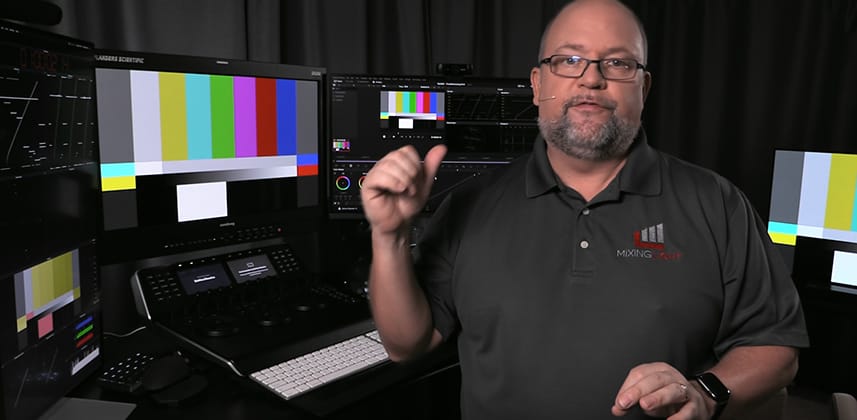Using Resolve’s Bars and Grayscale generators to explore the RCM workflow
Resolve Color Management (RCM) gives you, the colorist, explicit control over how the software interprets footage in your projects. You can precisely tag non-RAW assets with their native specifications. This lets the software calculate how to transform footage into your desired output. The transforms are mathematical and, as a result, non-destructive – unlike LUT workflows. BUT while the RCM workflow benefit is more precise and higher quality color transforms, what is the cost (or trade off)?
RCM requires you know the origin of your footage
Unlike working with RAW recorded footage, which can explicitly define its origin, non-RAW footage rarely carries such metadata with it. That’s why camera reports from the DP, AC, or DIT can be vital. If the settings of the camera are preserved on paper then we can easily implement an RCM workflow. But what if you don’t know the ‘origin’ of your footage? What if there are no camera reports? Is there a way to test your footage to determine the proper Color Management settings to implement a RCM workflow? Possibly, if your camera-person recorded out a known test signal (like color bars). Starting with a known source makes it much easier to determine the proper Input Color Space for an RCM workflow.
Using test signals to discover the Color Space (and Gamma) of Resolve’s internal generators
In this video Insight, we explore a strange behavior when you add Resolve Bars or Grayscale generators to a timeline with Resolve Color Management enabled. You can easily follow along yourself to see this action (in Resolve 15.2, assuming Blackmagic doesn’t fix this in future updates). We learn that the default behavior for those generators result in an image with an improper Gamma adjustment applied. We also learn how to use an OpenFX plugin (Color Space Transform) to identify and un-do the incorrect adjustment. Finally, we learn the difference between Rec.709 (scene) and the other Rec.709 options in DaVinci Resolve.
My hope in this Insight isn’t that you learn only how to fix this particular, quirky problem. My hope is you learn how to troubleshoot RCM workflow problems, generally. My goal is for you to walk away with a better understanding of the Resolve Color Management workflow.
Update: Be sure to check out Ryan’s comments below about the MediaInfo app that uncovers metadata that Resolve (and other post-production) apps aren’t pulling in – including gamma and color space details. Thanks Ryan!
-pi
Member Content
Sorry... the rest of this content is for members only. You'll need to login or Join Now to continue (we hope you do!).
Need more information about our memberships? Click to learn more.
Membership optionsMember Login


